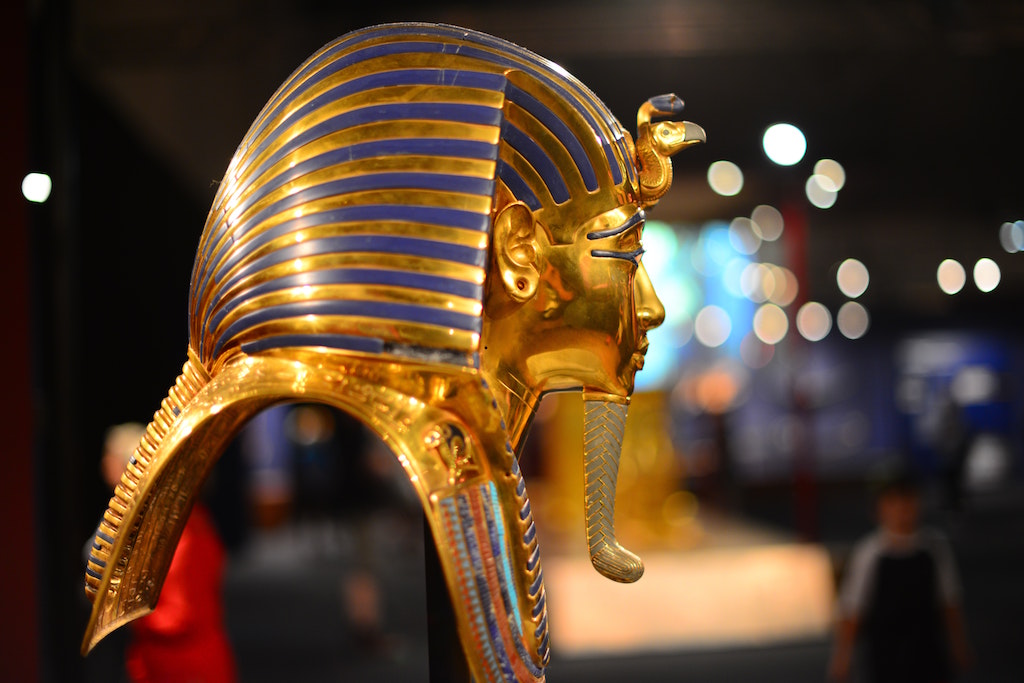
Culture Critic Eve Orford explains why everyone should be making a trip to London’s Saatchi Gallery to marvel at the treasures of the legendary Egyptian ruler, Tutankhamun
Before Tutankhamun was even able to reach the age of 10, he was crowned the pharaoh of Egypt. Although he contributed little to the success of the New Kingdom over 3000 years ago, he is considered the most famous pharaoh due to the discovery of his tomb. In 1922, Howard Carter and his team found the tomb mostly intact, unlike many others that had been robbed of their riches. Nearly 100 years later, over 150 of these spectacular finds from his renowned tomb are going on their last worldwide tour before they remain in Egypt forever. These invaluable objects are currently in London’s Saatchi Gallery until the 3rd May 2020.
In comparison to the ‘Sunken Cities: Egypt’s Lost Worlds’ exhibition from 2016, which presented an expansive history on relations between the Egyptians and Greeks, Tutankhamun’s exhibition covers a much smaller period of time. It encapsulates the young pharaoh’s journey into the afterlife, by examining the objects from his tomb that the ancient Egyptians believed would be transported with him, through the use of magic, into the Netherworld. The way in which the exhibition has been installed helps to retell this history. It covers Tutankhamun’s burial at the age of 19, his discovery by Howard Carter, and how his name still lives on today through the media.
“[The exhibition] encapsulates the young pharaoh’s journey into the afterlife
Everywhere you turn there is golden treasure, and the darkened exhibition with the use of spotlights allows the visitor to focus in on these breath-taking items, accentuating the vivid colours found in the jewellery and appendages. Yet, when you look past the beauty of the items, the harsh reality of Tutankhamun’s early succession is made apparent. The Gilded Wooden Bed evidently belongs to the pharaoh because of its gold leaf adornment. The frame is cramped, too small for a full-grown adult, and it features an intricate carving of Bes, a god known to protect new-borns. Four Boomerangs are also on display in the exhibition, and they could easily have been used for entertainment by the pharaoh during his childhood. Both of these everyday items may appear normal. But by viewing the objects in person, it is made evident that this pharaoh of Egypt was merely an adolescent on his deathbed.
Unfortunately, the iconic Death Mask is not a part of the tour. In the seventies, while on tour in Berlin, a statue of the goddess Serket was accidentally beheaded, leaving Egypt to reconsider which of the artefacts could safely leave Egypt due to their fragile nature and historic value. In 2014, the beard of Tutankhamun’s Death Mask also broke off during maintenance, which may have added further to the anxieties of allowing such important items to leave the Museum of Egyptian Antiquities in Cairo.
“The Crook and Flail, an iconic symbol of power, left me stunned
The Crook and Flail, an iconic symbol of power, left me stunned. The description underneath notes that a smaller version was also found inside the tomb, presumably from when Tutankhamun was coronated as a child. These seemingly straightforward instruments of power, unlike many of the intricate relics which have been painstakingly crafted to depict detailed scenes of daily life and afterlife, command attention purely from their popularity, giving them an almost legendary status. Together with the rest of the exhibition, visitors are unable to forget how so much power was bestowed to someone so young.
Another treasure intended to stun the crowds is the Guardian Statue which has left Egypt, along with 59 other finds, for the first and only time. This statue is one of two Guardian Statues that Carter found when the tomb was first discovered, as it stood by the entrance to the burial chamber. Studies of the mummy revealed that the height of this magnificent wooden statue matches that of the pharaoh. This personal detail is almost allowing visitors, in a way, to get closer to knowing the real Tutankhamun.
With off peak student tickets for under £25, this is the closest most can get to seeing any of Tutankhamun’s treasures without venturing to Egypt. I would highly recommend going to this unmissable exhibition before it leaves in May, not only to see the golden treasures, but also the touching items that belonged to the child pharaoh.
Comments